HA GIANG - Trung's hands are blistered, and his steps are always cautious as the soil in Minh Tan (Vi Xuyen) may contain landmines, "relics" left over from the border war in the North.
In early summer 2023, 22-year-old Private San Van Trung was given a knife, a shovel, and an iron rod by his platoon leader – tools that would be with him until his discharge in early 2025. After three months of basic training, Trung and 11 comrades were called upon to clear unexploded ordnance left over from the border war in the North. These young men in their twenties were taught safety rules for clearing explosives, how to distinguish different types of mines, and how to neutralize some types.

Private First Class San Van Trung enlisted in February 2023 and in June participated in clearing unexploded ordnance left over from the war in the Minh Tan border area, Vi Xuyen district, Ha Giang province. Photo: Giang Huy
Trung, of Hoa ethnicity, grew up in Chi Ca commune, Xin Man border district. His nimble feet and familiarity with farming led to his selection as a pioneer in clearing land. He was part of the 19th Engineering Company, Ha Giang Provincial Military Command, one of six military units participating in the clearance of unexploded ordnance and landmines left over from the war to facilitate the search and collection of the remains of fallen soldiers and to clear land for production.
After the 10-year war to defend the northern border (1979-1989), Ha Giang still has 77,900 hectares of land contaminated with landmines and unexploded ordnance, with 7,500 hectares of that area having a high concentration of mines and mortar shells. In Vi Xuyen alone, which suffered approximately 2 million artillery shells from across the border between 1984 and 1989, no one can count how many mines and mortar shells remain.
Through field surveys and mapping for demining, the border area of Minh Tan commune has been classified as level one, meaning each hectare of land still contains more than 100 landmines; some points are level two - about 60-80 mines, all of which are considered extremely dangerous. Assigned to demin over 150 hectares of land in 2023-2024, the engineering soldiers of Company 19 have now cleared over half of the area.

Military engineers plant flags to mark the location where explosive devices were detected underground. Photo: Hoang Phong
Trung's hands were calloused after eight months of wielding a machete with a 2-meter-long wooden handle. It wasn't as simple as working in the fields where you could "slash however you wanted"; every step he took on the ground had to adhere to safety rules. Making a mistake could cost him and his comrades their lives.
After clearing away the weeds and bushes, Trung gently poked a metal probe into the soil to check for mines. "To avoid hitting the mine cover and causing injury, the probe and shovel must not be inserted straight down into the ground but at a 30-40 degree angle," the private explained, recounting the lesson he had learned by heart. Feeling safe, Trung used the shovel to scoop until the 30 cm thick layer of silt was gone, creating a small hole, a practice called "stepping." The engineers following behind placed their feet in the hole and moved the mine detector around. If the signal sounded, a red flag was planted.
The dangers of his job were gradually exposing the young man to a part of the reality of the Northern border war, something he had only heard about as a child from his grandparents, who had served as civilian laborers carrying rice for the soldiers defending the Chi Ca border. At the age of 15, Trung saw the scars of war for the first time through a deep hole in the cliff face caused by artillery shells while working with his father on a construction project in the village.

Lieutenant Pham Duc Truong, Platoon Leader of Engineering Battalion 3, inspects the unexploded ordnance depot of Engineering Company 19 after detonation, January 2024. Photo: Giang Huy
The closer we get to the border, the denser the minefields become, and we easily encounter M79s, K58s, 625A, 625B... Many of these mines, with plastic casings, have been lying dormant in the ground for over 40 years, and when unearthed, they still look brand new. These mines are primarily designed to incapacitate enemy forces, causing minor injuries such as amputations of limbs, or fatal injuries.
The engineers' footsteps grew more cautious as they approached the fortifications and trenches densely covered with barbed wire, where both sides had planted numerous mines to protect their positions during combat. Explosives that couldn't be transported to storage were disposed of on the spot. Most of the remaining mines were neutralized and taken to storage awaiting controlled detonation.
Sấn Văn Trung often encounters fragments from mortar shells, the kind that no longer have lethal firepower. Whenever they encounter a mine, the detonation is always handled by engineering officers like Lieutenant Phạm Đức Trường, the 3rd Engineering Platoon Leader. The 25-year-old lieutenant, from Phú Thọ province, has personally detonated almost all types of mines after eight months of clearing mines in Vị Xuyên. The first time he held a real mine, Trường's hands trembled slightly, but now, upon seeing one, "his mind automatically knows how to detonate it."
One type of landmine that officers never allow soldiers to touch is the K69. This iron-cased mine, highly resistant to moisture even when buried deep underground, is detonated by a pressure of over 5 kg or a entanglement of 2 kg of wire, with a lethal radius of over 10 meters. Manufactured in China, it typically launches to waist level before exploding, hence its nickname "flying frog." This type of mine significantly reduces combat effectiveness, causing soldiers to suffer pain and blood loss rather than immediate death, and their comrades may not know where to begin first aid.
On the first day before leaving the camp to go to what was once a battlefield, Truong lit an incense stick with a cigarette stuck in the ground next to a large rock, silently praying, "May the spirits of our uncles and fathers protect us and keep us safe." Truong believed, "Our soldiers fought here, and even if they had to sacrifice themselves, they would still defend every inch of land. We, their descendants, will clean up the area so that the recovery team can find and bring our uncles and fathers back home."
"The work can be fast or slow depending on the weather and terrain, but safety must always be number one," said the engineering lieutenant, who looked older than his 25 years, speaking about a mission that doesn't allow for carelessness in even a single step. Each team has a supervising officer closely monitoring them, but each soldier selected for the formation is accustomed to discipline, so they don't need much prompting.

The mines and explosive devices cleared by the 19th Engineering Company are being gathered in one place, awaiting a decision on their disposal. Photo: Giang Huy
As winter approached, the demining process slowed down due to dense fog and temperatures dropping by 1-2 degrees Celsius. Engineers huddled in their camps, playing chess and arm wrestling to pass the time.
"The soldiers are impatient, but they can't argue against the weather because of the thick fog, visibility is not guaranteed," explained Major Pham Xuan Ngoc, Commander of the 19th Engineering Company. In this area, summers are scorching hot, and winters are foggy. The period of concentrated mine clearing operations usually lasts from April to early December. When the fog clears, the soldiers march back to the minefield. On days when they go to remote areas and climb cliffs, the soldiers carry their lunch and water with them so they can continue working in the afternoon.
Ten years ago, 26-year-old Ngoc led a platoon of engineers carrying military equipment, rice, and food supplies on foot for half a day to Ma Hoang Phin village in Minh Tan commune, located near the border. The soldiers set up camp a short distance from the last remaining tree in the village and spent more than half a year clearing mines and preparing the land for the construction of the border patrol road.
Returning to Minh Tan in 2023, the concrete road had transformed the border village so much that Major Ngoc could hardly recognize it until he saw the solitary ironwood tree standing by the roadside. Concrete houses had gradually replaced thatched roofs, and the cassava fields had become general stores. But beneath the ground, countless landmines still lay waiting to be discovered.
This mission was more challenging for Major Ngoc as he was in charge of a hundred-man engineering company clearing 150 hectares of land. For him, the work now held more meaning than just a task assigned by his superiors; clearing the land meant that "the remains of those who had fallen could be found and brought back sooner, and the living could have land for production sooner, and could go to the fields and forests without worrying about stepping on landmines."
For Lieutenant Truong, upon graduating from the Engineering Officer School, he never imagined he would one day be removing landmines left behind on the border. Young people from the late 1980s and early 1990s generations, for various reasons, didn't learn much about the Northern border war through books. "Now that we're clearing mines, our children and grandchildren won't have to do these things when they join the army," he said.
Hoang Phuong - Vnexpress.net
Source

![[Live] 2025 Community Action Awards Gala](/_next/image?url=https%3A%2F%2Fvphoto.vietnam.vn%2Fthumb%2F1200x675%2Fvietnam%2Fresource%2FIMAGE%2F2025%2F12%2F16%2F1765899631650_ndo_tr_z7334013144784-9f9fe10a6d63584c85aff40f2957c250-jpg.webp&w=3840&q=75)
![[Image] The tenacious fighting spirit of Vietnamese women's football](/_next/image?url=https%3A%2F%2Fvphoto.vietnam.vn%2Fthumb%2F1200x675%2Fvietnam%2Fresource%2FIMAGE%2F2025%2F12%2F17%2F1765990260956_ndo_br_4224760955870434771-copy-jpg.webp&w=3840&q=75)
![[Image] Leaked images ahead of the 2025 Community Action Awards gala.](/_next/image?url=https%3A%2F%2Fvphoto.vietnam.vn%2Fthumb%2F1200x675%2Fvietnam%2Fresource%2FIMAGE%2F2025%2F12%2F16%2F1765882828720_ndo_br_thiet-ke-chua-co-ten-45-png.webp&w=3840&q=75)
![[Photo] Prime Minister Pham Minh Chinh receives the Governor of Tochigi Province (Japan)](/_next/image?url=https%3A%2F%2Fvphoto.vietnam.vn%2Fthumb%2F1200x675%2Fvietnam%2Fresource%2FIMAGE%2F2025%2F12%2F16%2F1765892133176_dsc-8082-6425-jpg.webp&w=3840&q=75)
![[Photo] Prime Minister Pham Minh Chinh receives Lao Minister of Education and Sports Thongsalith Mangnormek](/_next/image?url=https%3A%2F%2Fvphoto.vietnam.vn%2Fthumb%2F1200x675%2Fvietnam%2Fresource%2FIMAGE%2F2025%2F12%2F16%2F1765876834721_dsc-7519-jpg.webp&w=3840&q=75)



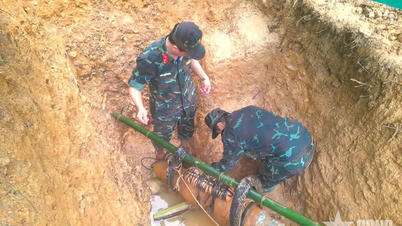

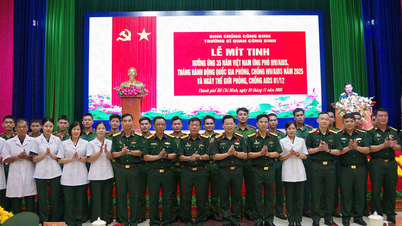
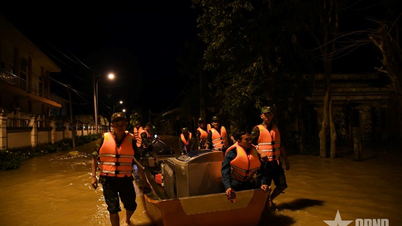
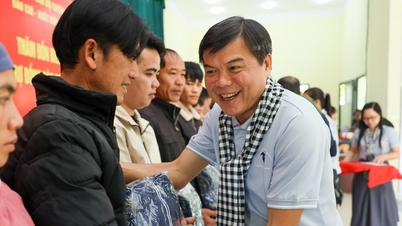
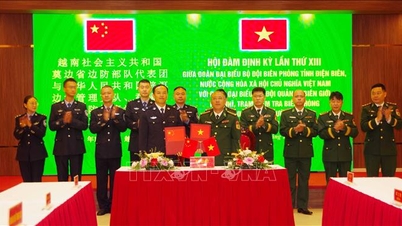





























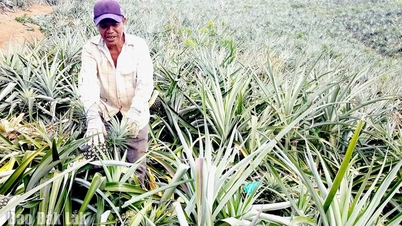































![[Live] Closing Ceremony and Award Presentation for the "Impressive Vietnam Tourism" Video/Clip Creation Contest 2025](https://vphoto.vietnam.vn/thumb/402x226/vietnam/resource/IMAGE/2025/12/17/1765974650260_z7273498850699-00d2fd6b0972cb39494cfa2559bf85ac-1765959338756946072104-627-0-1338-1138-crop-1765959347256801551121.jpeg)




























Comment (0)